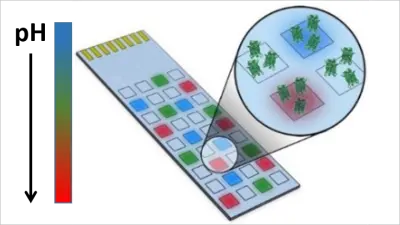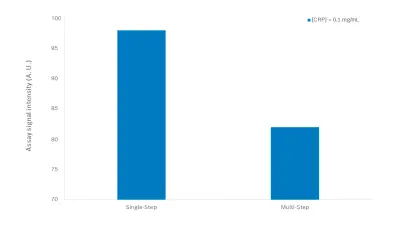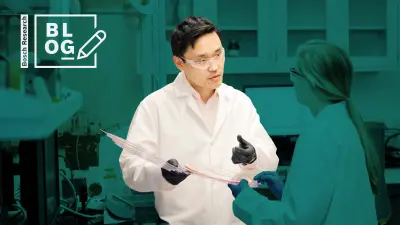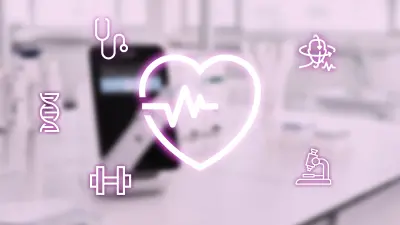Single-step immunoassay is no longer just a dream
Bosch Research Blog | Post by Nadezda Fomina, 2021-04-01

I admit, immunoassay has been around forever. It’s not new, and it’s not exciting, but it’s the workhorse of laboratory diagnostics, widely used in reference test labs and hospitals. But still, it has a bad reputation, being notorious for tediousness and user errors. The reason behind this? Multiple washing and incubation steps. But imagine if single-step immunoassay was no longer just a dream! We in the Bioelectronics group have demonstrated that immunoassay can be reduced to a single step without losing its diagnostic power. The trick? Our patented electronic pH modulation technology.
Electronic pH modulation as a secret weapon
The Bioelectronics group at Bosch Research has developed a method to control biochemical processes through electronics. Basically, we manipulate the pH of a biological solution through electrochemical reactions with high speed and precision (on the scale of a few microns).
More about the pH modulation process.
We demonstrated highly reproducible acidification and alkalinization of the buffer solution across the dynamic range of our pH sensor (pH 4.5 to 7.5). Using dynamic current control, we generated and sustained 3 distinct pH microenvironments simultaneously for several minutes in a single solution, and we demonstrated spatially-resolved, pH-driven control over biochemical reactions. See our publication for more detail.

In a sense, we’re just taking a tool from nature’s arsenal, because many biochemical processes in live organisms are controlled though pH changes: Think, for example, of enzymes having their own narrow optimal pH windows, or of cell energy cycles.
But as it was part of the method, I started to facilitate retrospectives after each and every sprint. The first retrospectives were mainly about organizational issues, as the team still had to set itself up. I actually wondered what we would talk about after two or three retrospectives. But as time passed, the team (and, I have to admit, also I myself…) learned that these retrospectives were a place where their concerns, their issues and their needs were heard. They bravely opened up and shared what they needed to deliver maximum performance.
We applied our on-demand pH modulation technology to dramatically simplify and automate the “finicky” immunoassays. Immunoassays rely on specific antibodies to bind a target biomarker, and on a detection system (usually optics) to quantify it. As a proof of principle, we measured C-reactive protein, or CRP, a common biomarker of inflammation. Elevated levels of CRP in blood can be caused by a variety of different diseases, from infection and cardiovascular problems to cancer. Using electronics and a pH-sensitive fluorophore, we accurately measured the levels of CRP at concentrations way below the clinically relevant cutoff, and we did it in a single step.

Through pH, we “switch on” and measure the assay signal only a few microns above the electrode surface, and the non-specific signal from the bulk solution above it remains “switched off”. Therefore, there is no need to wash it away. Elimination of washing steps does not compromise the assay’s sensitivity. In fact, we measured a higher signal in pH-assisted single-step assay compared to the traditional, multi-step scheme.
Elimination of washing steps does not compromise the assay’s sensitivity.
Outlook
Controlling biochemical microenvironments with high spatial and temporal precision opens up a plethora of new possibilities for scientists and engineers working towards miniaturization and automation in healthcare and diagnostics. Besides the obvious benefits of better reproducibility and shorter assay time, electronic pH modulation offers additional advantages of creating optimal test conditions on-demand, easy multiplexing, and improved specificity. Combine that with chip-micro technologies, and the possibilities are endless!
What are your thoughts on this topic?
Please feel free to share them via LinkedIn or to contact me directly.
Author: Nadezda Fomina
Nadezda is a synthetic polymer chemist with a background in developing “smart” materials for drug delivery. Currently, she is a Lead Scientist at Bosch Research. Her team develops new technologies for next-generation medical diagnostics, especially for point-of-care applications. Their vision is to revolutionize healthcare by combining state-of-the-art engineering solutions in MEMS sensors, circuit design, and wireless communication with biochemistry.




